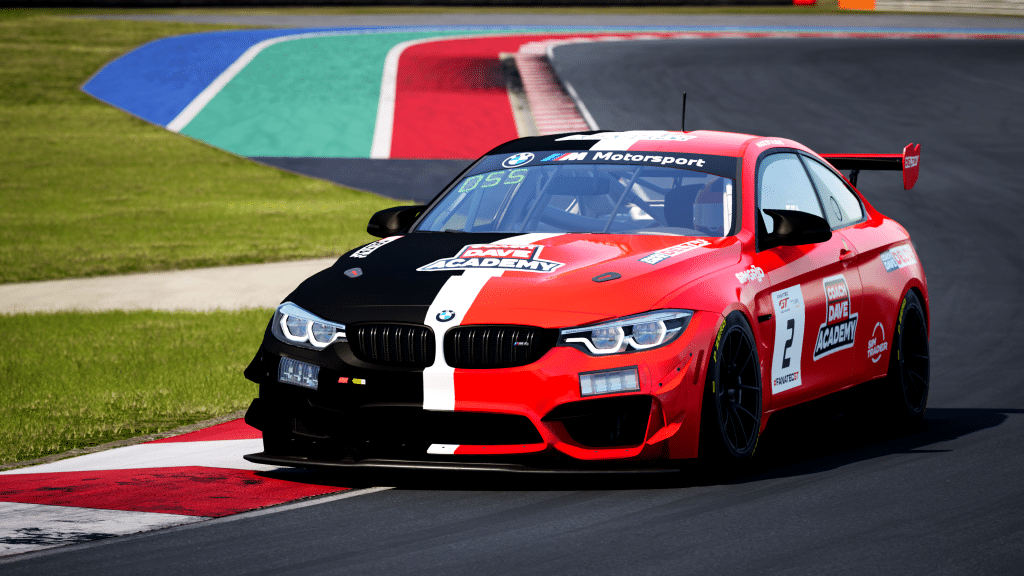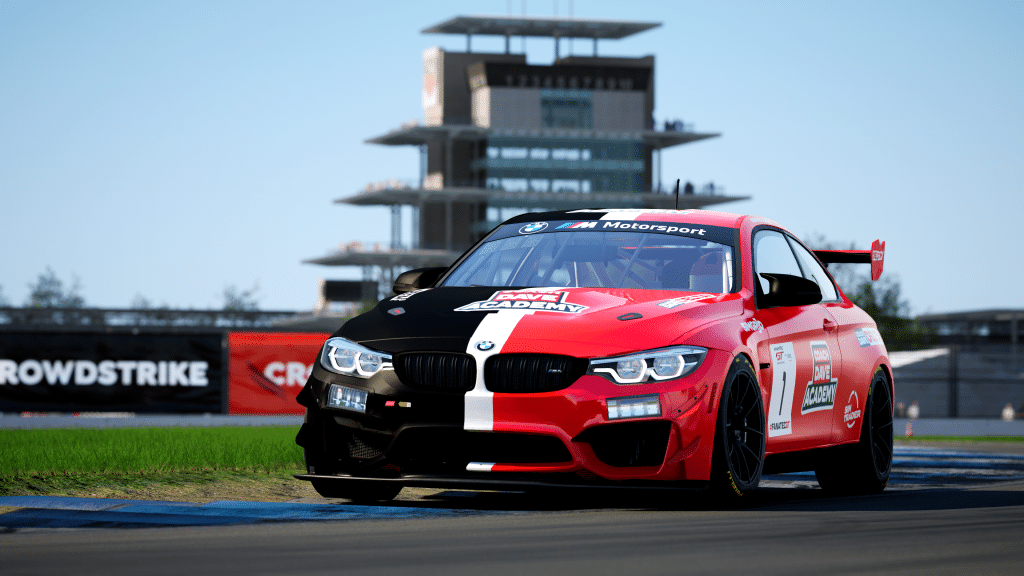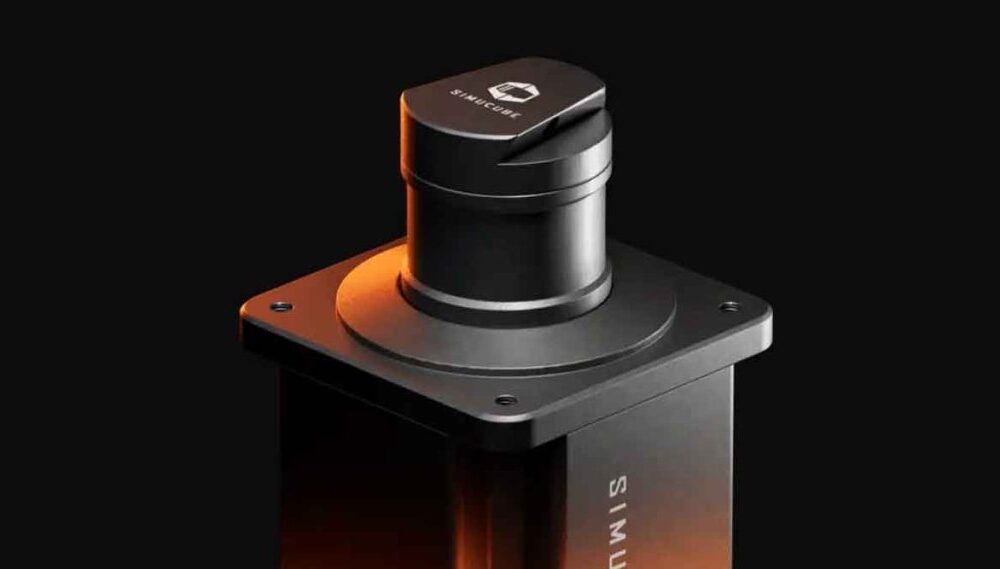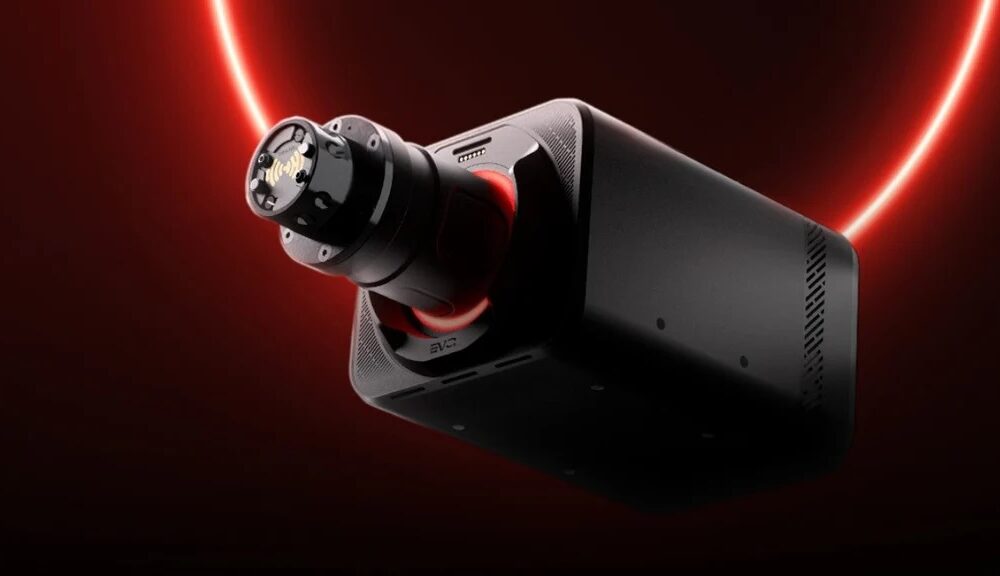The BMW M4 GT4 is a specialised version of the popular BMW M4 model designed for GT4 class racing. It has been in production since 2014 and enjoyed immense popularity in international and regional GT4 championships until its retirement at the end of 2022 following the release of the second-generation BMW M4 GT4.
The updated variant of the BMW M4 GT4 was unveiled in June 2022, offering significant improvements for drivers and customer teams before the 2023 season. You can easily distinguish between the two generations of the BMW M4 GT4 by looking at their bodywork designs, however, across the Sim Racing world, the newer BMW M4 GT4 is yet to be released. Let’s learn more about Assetto Corsa Competizione’s interpretation of the car.
Introducing The BMW M4 GT4
The BMW M4 GT4 was added to ACC in July 2020 as a part of the GT4 DLC together with ten other GT4 cars. Only the first generation of this car is available in ACC, but this does not leave it at any performance deficit: McLaren’s 570s GT4 has been replaced by the Artura GT4, whilst the Aston Martin V8 Vantage GT4 is set to have an “evo” version for the 2024 racing season – both of which are not included in ACC.
You can read about the complete list of GT4 cars in this article on the Coach Dave Academy website.
Overall, the BMW M4 GT4 has similar strengths to its GT3 elder sibling. Strong over kerbs and well-balanced, it is a good all-round choice for drivers looking to enter the class, although it lacks some refined performance compared to cars such as the Porsche 718 Cayman GT4.
The Basic Car Characteristics
The BMW M4 GT4 features a twin-turbo 3.0-litre engine positioned at the front of the car, producing 431 horsepower. While the car is down 70 horsepower compared to the senior BMW M4 GT3, it also has less aero downforce in medium- and high-speed corners, meaning that, unlike single-make challengers such as the Ferrari 488 Challenge, it still feels very natural to just jump in and drive.
Overall, the BMW M4 GT4 is 7-10 seconds per lap slower than the M4 GT3 on a typical circuit, however, it is easier to set up because of a variety of setup limitations. The most crucial restrictions are:
- The caster angle is fixed at 8.4 degrees
- The range of traction control (TC) and anti-lock braking system (ABS) settings are limited compared to the GT3. TC and ABS have five and three settings, respectively, compared to 11 settings (0-10) on the GT3.
- Front and rear anti-roll bars have only three settings (0-2) compared to 10 (0-9)
- Fast dampers (both bump and rebound) are not adjustable separately. You can change only the slow damper settings.
- The rear wing has six options instead of nine compared to the M4 GT3
As with most GT4 cars, the priority is to maximise mechanical grip with optimal suspension and anti-roll bar settings and then fine-tune the setup with aero and electronics adjustments after.
Steering and Cornering
As a front-engine car, the BMW M4 GT4 with default setup has noticeable understeer on corner entry. Stiff front suspension further compounds this problem because the minimum wheel rate for front tyres is 166,000 N/m, compared to 105,000 N/m in the BMW M4 GT3. As a result, usually, you need the softest possible wheel rates at the front to get the maximum amount of front grip.

The second essential tool that helps to reduce understeer is the anti-roll bars (ARBs). Generally, you need a softer ARB at the front and a stiffer ARB at the rear. Softer front ARB improves compliance and shifts the mechanical balance toward less understeer, whilst stiffening the rear ARB supports the rear and moves the balance rearwards on the corner exit.
Damper settings can also help to improve the behaviour of the M4 GT4 on turn-in. Soft front bump dampers add grip to the front tyres through better compliance, and stiff front rebound dampers help to reduce understeer as a driver releases the brakes at the corner entry. Remember that the damper setup range in the BMW M4 GT4 is significantly smaller than in the GT3 (0-24 vs 0-40). The “stiff” value for the GT4 will be in the middle of the setup range for the GT3.
Need Some ACC GT4 Setups?
You can own the BMW M4 GT4 bundle, plus every other ACC setup from Coach Dave Academy by having a Coach Dave Delta Subscription.
Our Delta subscription allows you to focus purely on your on-track performance. With our automatic setup installation, using Delta for setups couldn’t be any easier.
The Delta app will automatically adjust your tyre pressures based on track temperature, so that’s one less thing to worry about, too.
Power Delivery and Braking
The BMW M4 GT4 includes a full range of customisable electronic assistants, including traction control (TC) and an anti-lock braking system (ABS). As usual, try to use as little TC as possible to maximise acceleration. Since GT4 cars have less power than GT3s, you should turn off TC completely on most circuits. Similarly, keeping the differential preload low helps reduce understeer during brake release and early acceleration.
This car likes its brake balance shifted to the rear to improve overall braking efficiency and rotation at the corner entry upon brake release. The minimal value for the brake bias in this BMW is 49.0, and on most tracks, the optimal value will be between 49 and 51. In this aspect, the BMW M4 GT4 is like the Mercedes-AMG GT4 and some other front-engine cars.
Aerodynamics and Bodywork
The BMW M4 GT4 likes a maximum or near-maximum rake to move balance forward and generate better grip from the front tires. High front bump stops usually complement low front ride height to stabilise the car during braking.

The rear wing in GT4 cars does not impact its overall speed too much, so start at the lower value and test it at the final stages of setup development. You may find extra pace with the higher wing on medium and high downforce circuits.
Final Thoughts
Although the GT4 class balance of performance does not currently favour the BMW M4 GT4, it is still enjoyable to drive. If you are not chasing the top of hot lap leaderboards, the BMW M4 GT4 can set competitive lap times on most circuits and stand out as one of the fastest GT4 cars on straights.
- You’ll go even faster using a Coach Dave Academy setup that you can get via Coach Dave Delta!
AI Coaching that actually works
Don't get lost in the data, instantly unlock lap time using our new real-time Auto Insights coaching. Elevate your braking, apex, and exit performance in record time.







